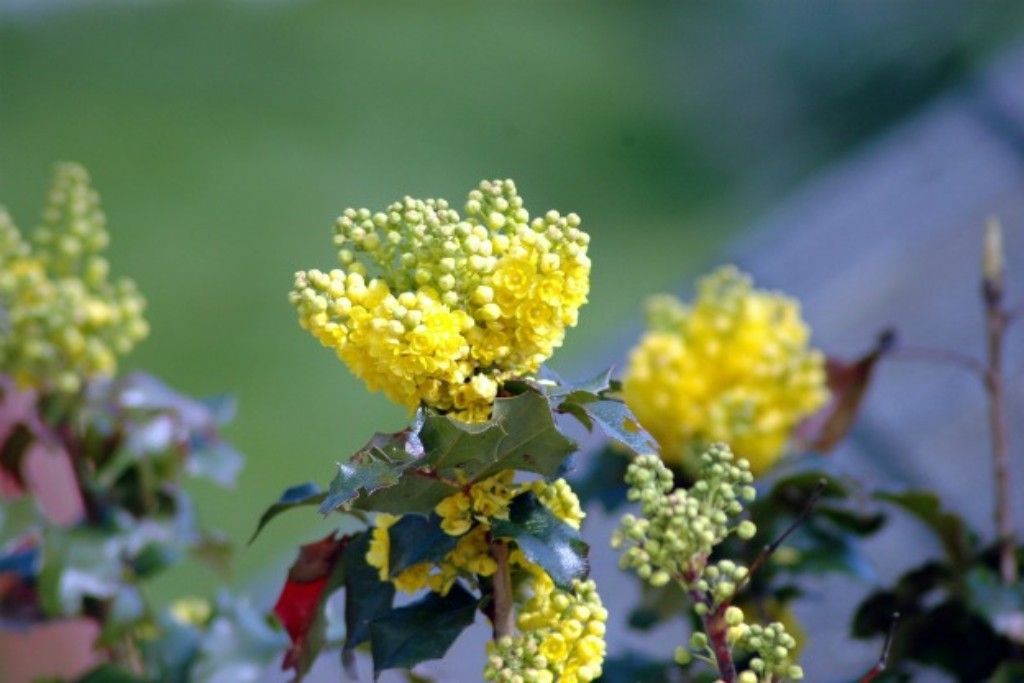
Mahonia aquifolia, our native Oregon grape.
Mahonias have clusters of small yellow flowers early in the spring. They were named to honor Bernard Mac Mahone (1775-1816), an Irish immigrant who established a nursery in Philadelphia. Jefferson asked him to propagate many of the seeds brought east by Lewis and Clarke’s expedition. The first Mahonia aquifolia, our native Oregon grape, was found in the wild in the Pacific Northwest even before the Lewis and Clarke expedition in 1804-1806.
At first Mahonia was propagated by layering, and as this was a difficult process, it sold for 10 guineas a plant. After quantities of seeds became available as a result of the expedition the price dropped, and by 1914 Mahonias were so plentiful that they sold for 3 a penny.
There are also two Asiatic species available for modern gardens, Mahonia japonica and Mahonia bealei. These were found by the plant explorer Robert Fortune when he visited Asia in the mid 1800’s. Japonica, as the name suggests, was found in a Japanese garden and has drooping racemes of flowers that smell like lily of the valley. Bealei was found in China and named after Mr. Beale of Shanghai who cared for Mr. Fortune’s specimens. It has erect clusters of small flowers.









